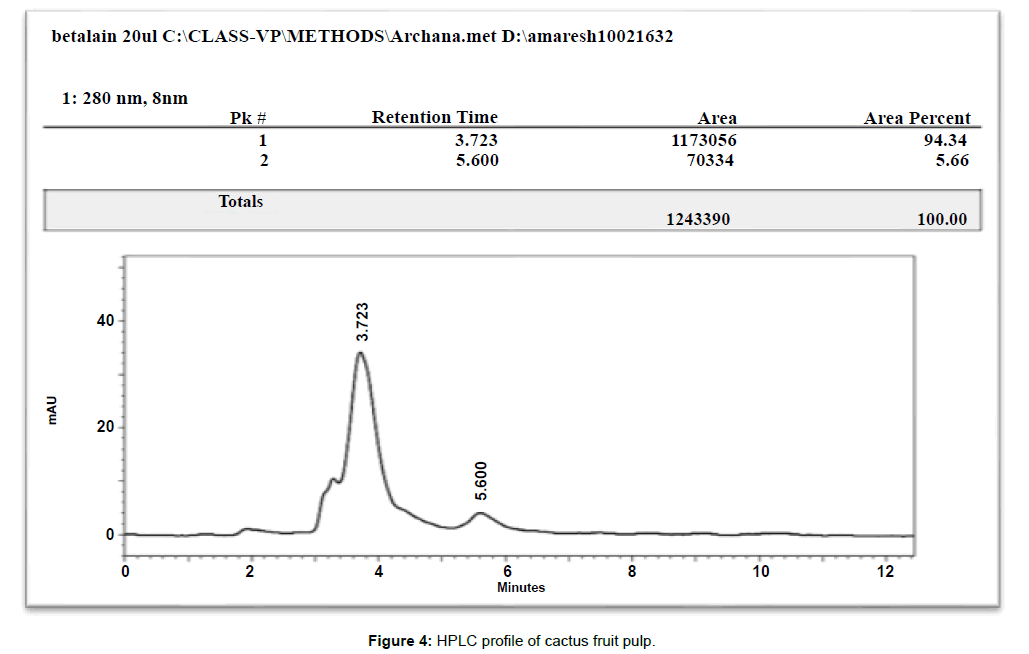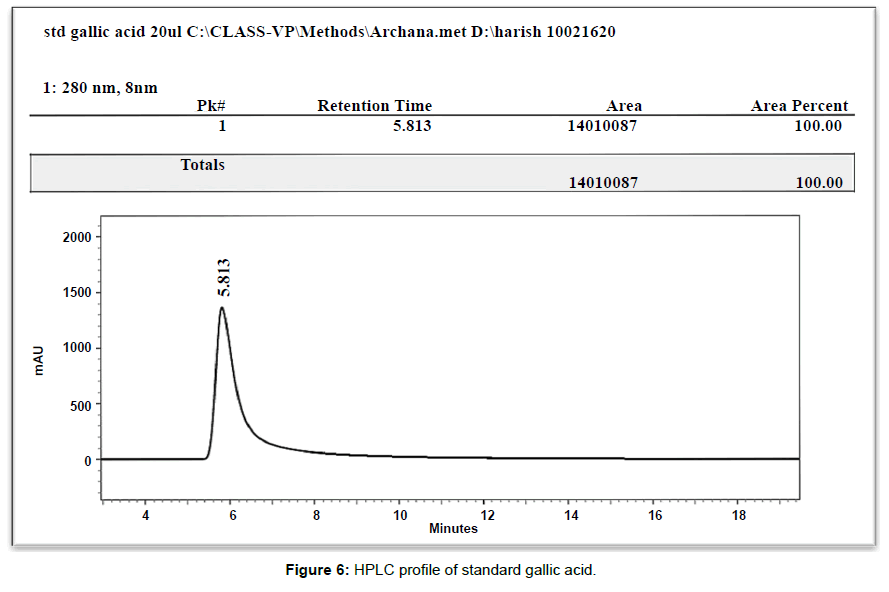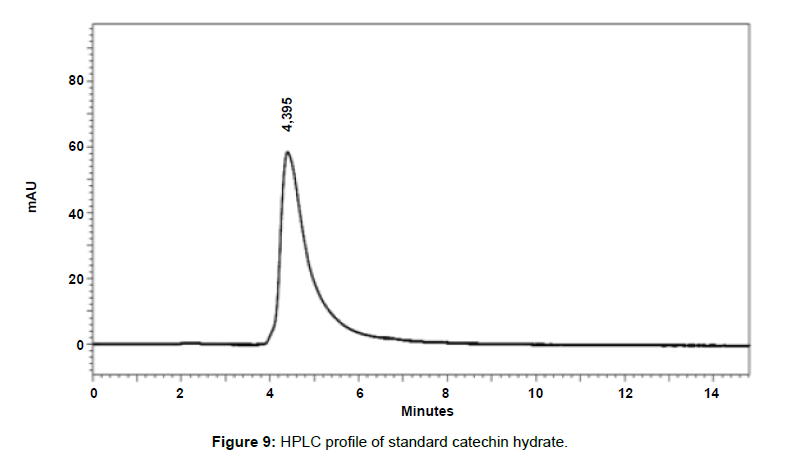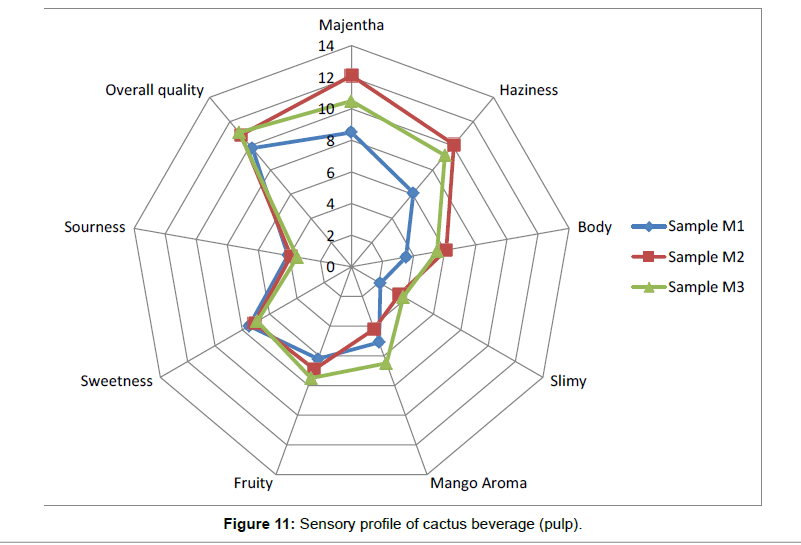Research Article Open Access
Preparation of Nutri Beverage Mix Using Opuntia dillenii (Cactus Fruit)
Amaresh Mishra*
Central Food Technological Research Institute (CFTRI), Mysore, India
- *Corresponding Author:
- Amaresh Mishra
Central Food Technological Research Institute (CFTRI)
Gautam Buddha University, Biotechnology
Fatehpur, Uttar Pradesh 212601, India
Tel: +91-8800968194
E-mail: amaresh.mishra007@gmail.com
Received date August 27, 2016; Accepted date September 02, 2016; Published date September 09, 2016
Citation: Mishra A (2016) Preparation of Nutri Beverage Mix Using Opuntia dillenii (Cactus Fruit). J Biotechnol Biomater 6:243. doi: 10.4172/2155-952X.1000243
Copyright: ©2016 Mishra A. This is an open-access article distributed under the terms of the Creative Commons Attribution License, which permits unrestricted use, distribution, and reproduction in any medium, provided the original author and source are credited.
Abstract
The cactus pear fruit derived from Cactaceae family plant, morphologically distinct plant families. Cactus fruit is abundantly found in Mexico and the United States, but is also grown in Africa, Madagascar, Australia, Sri Lanka and India. It contains protein, fat, fibre etc. similar to other common fruits. The whole content of free amino acids is more than compared to different fruits, contains high level of serine, g-amino butyric acid, glutamine, proline, arginine and histidine and also contains methionine. It is also rich in calcium and phosphorus. Pigments are found mainly within the fruit, betalains and carotenoids are present within the peel and pulp of various ecotypes which have shown antioxidant capacity, also anti-allergenic, anti-inflammatory, anti-carcinogenic and cardio-protective activity.
Visit for more related articles at Journal of Biotechnology & Biomaterials
Abstract
The cactus pear fruit derived from Cactaceae family plant, morphologically distinct plant families. Cactus fruit is abundantly found in Mexico and the United States, but is also grown in Africa, Madagascar, Australia, Sri Lanka and India. It contains protein, fat, fibre etc. similar to other common fruits. The whole content of free amino acids is more than compared to different fruits, contains high level of serine, g-amino butyric acid, glutamine, proline, arginine and histidine and also contains methionine. It is also rich in calcium and phosphorus. Pigments are found mainly within the fruit, betalains and carotenoids are present within the peel and pulp of various ecotypes which have shown antioxidant capacity, also anti-allergenic, anti-inflammatory, anti-carcinogenic and cardio-protective activity.
Keywords
Cactus; Opuntia dillenii; Betalain; Nutrients
Introduction
The cactus pear fruit derived from Cactaceae family plant, morphologically distinct and impressive plant families. Juices are acknowledged for their high nutritional amount, while recent technology and good manufacturing practices (GMPs) now establish their taste remains similar to that of the original product [1,2]. Cactus pear is particular for the presence of betalains, a widely used natural colorant in the food industry. Cactus juice, also known as nopales or prickly pear juice, is a popular beverage in many different countries like Mexico, South America, Asia, the Middle East and parts of Europe [3]. This beverage has recently caught popularity in the United States. Opuntia plants are native to several environments, starting from desert areas below water level to high-altitude areas like the Peruvian Andes and from the tropical regions of North American country, wherever temperatures are continuously higher than 5ºC, to areas in North American nation which will fall to -40ºC in winter [4,5]. It is found wild in plenty of the plants in the Himalayas up to 1,500 m. Roxburgh in 1832 advised this plant to be a native of India [6]. The overall flowering season is from the second week of May to the middle of August. Similarly, the fruiting season starts in November and continues up to February. Some fruits could be seen even up to the end of April. A bush spreading over 2.5 m square yields about to 2.5 kg of fruits annually [7]. More than 300 species of the genus Opuntia are known but, only 10 to 12 species have been exploited for their fruit, tender leaves (cladodes) for production. At industrial level, Opuntia species are used for making juice, sauce, as a sweetener for diabetic patients [8].
Why natural beverages are required
Consumer interest in food-health relationships continues to grow leading to increased market demand for nutritionally-enhanced and value-added foods and beverages with health benefits [9]. There are many carbonated drinks available in the market with less nutritional value and also causes the various types of severe diseases like obesity, diabetes, liver damage, tooth decay, kidney stones and chronic kidney disease, heart disease etc. due to uses of harmful chemicals like synthetic colour, flavour, preservatives. So there is an urgent need to making natural drinks which has high nutritional content and no side effect and diseases like carbonated beverages [10].
Nutritional value of cactus fruit juice
Cactus fruit juice is rich in amino acids, specifically taurine [11]. Due to its antioxidant action, it can be used to improve overall health of a person by the improving the immune system, and also able to reduce the cancer risk and can even reduce the severity of hangover caused by excessive alcohol consumption [12,13]. The fruit and cactus pear cladodes extract can be preserved and processed, using different technologies [14]. Fibre-rich products can be made to help control diabetes and obesity [15]. The cactus plant produces a highly valued natural colorant because it is the host of the cochineal insect [16,17]. Cactus juice is a low-calorie, saturated fat- and cholesterol-free source of dietary Fibres, Vitamin C, Calcium and Antioxidant compounds [18]. Due to its antioxidant property, it can be used to improve overall health of a person [19,20].
Medical research and scientific studies on cactus fruit
According to the MFMER (Mayo Foundation for Medical Education and Research), it indicates that the prickly pear cactus extract may help to decrease blood glucose levels in patients with type 2 diabetes. The fibres and Pectin found within the cactus emerge to lower blood sugar by declining the sugar absorption in the stomach and intestines. The plant extract improves insulin sensitivity. In other research, prickly pear extract has shown to ease the nasty effects and pain of an alcohol hangover. Scientists study continuously the impact of prickly pear effects on cholesterol levels, viral infections and other health related issues [21].
Side effects of prickly pear cactus
Medical doctors, dietician nutritionists and holistic practitioners suggested that people gradually add prickly pear cactus to their diets but it may cause negative side effects in some people. Mild diarrhoea and abdominal bloating are most common side effects [22,23]. On the other hand, natural antioxidant contents of cactus fruit has raised interest in the use of cactus pears as an alternate for synthetic antioxidants, such as butyl hydroxytoluene, butyl hydroxyanisole and butyl hydroxyquinone which are reported to have cytotoxic effects are used in foods susceptible to lipid oxidation.
Health benefits of cactus beverage
Cactus beverage helps to control cholesterol levels and also prevents inflammation in the muscles, arteries, gastrointestinal tract and cardiovascular region.
Cactus beverage can reduce inflammation in the urethra and bladder. Also it helps to reduce pain experienced by the peoples with bladder infections and gallstones.
Cactus beverage has shown to effectively treat constipation. Cactus beverage is a great source of phytochemicals, which can help strengthen the immune system of body.
Lab animals have shown to have a decrease tumour growth after ingesting cactus beverage because of an increased immune system response.
Additionally, the nopal cactus has high levels of betalains, which are antioxidants and shown to prevent premature aging, reduce inflammation and detoxify the human body.
Cactus beverage to be for non-insulin diabetes. Research showing that cactus beverage can help decrease and stabilize blood glucose and insulin levels. The underground roots are used for inducing quick vomiting during an individual bitten by poisonous snakes [24].
Methods
Preparation of papaya and cactus fruit beverage
Seven samples were prepared with different ratios of fruit powders and two samples were selected for the final sensory analysis with respect to parameters viz., sweet, sour, salty and body of the beverage, based on the acceptance of the product by the people in the laboratory. Sensory evaluation was carried out by trained panellists.
Sample 1: Opuntia dillenii dry powder with sugar and dry form of papaya pulp was mixed in three different ratios viz. 5 g:5 g, 3 g:7 g and 7 g:3 g. 15 ml of water added in each sample and theses three samples were evaluated for sensory characteristics with respect to parameters viz., sweet, sour, salty and body of the beverage (Figure 1).
Preparation of mango and cactus fruit beverage
Sample 2: 15 g Opuntia dillenii pulp and 15 g mango pulp were taken in three different ratio viz., 7:3, 3:7 and 5:5 respectively. 4 g sugar and 5 ml of drinking water were added and mixed well. It was labelled as M1, M2 and M3. The products were evaluated for sensory characteristics with respect to parameters viz., sweet, sour, salty and body of the beverage (Figure 2).
Total polyphenols estimation in cactus fruit pulp
2 ml of cactus pulp was taken and added 1.70 ml of water and 0.25 ml of folin-denis reagent, after 3 min, 0.5 ml of 20% sodium carbonate was added. Total volume was made up to 2 ml. Tube was incubated at 40°C for 30 min. Absorbance was measured at 760 nm in a UV-Vis spectrophotometer. Quantification of polyphenol was done using the standard graph of Gallic acid and expressed as Gallic acid equivalent (GAE).
Betanin analysis in cactus fruit pulp
Cactus pulp (juice) 1 g was taken and methanol added in 1:5 ratio, homogenized by keeping it on a stirrer for 1 h. Extract filtered through a nylon filter (0.45 μg). Absorbance of the methanolic extract was measured at 535 nm using a UV-Vis spectrophotometer. Quantity of betanin was calculated using E1% value (10.09 mg/L).

A=Absorbance
DF=Dilution factor
MW=Molecular weight for betacyanin=550 g/mol
E=Extinction coefficient (For betacynin=60000 L/mol)
1=Path length of cuvette (1 cm)
Beta-carotene estimation in papaya pulp
0.8 g of papaya pulp was taken and mixed with 10 ml of alcohol kept on a stirrer for 1 h for extraction of beta carotene. After 1 h, the stirred mixture was taken and 18 ml hexane was added, and separated the hexane layer. Hexane layer was collected and to the pulp mixture fresh hexane was added, shaken well. The extraction was repeated 3-4 times until the suspension became colourless. The hexane layer containing b-carotene was pooled and dried over anhydrous sodium sulphate and absorbance was measured in a UV-Vis spectrophotometer at 479 nm (Figure 3).
Beta-carotene estimation in mango pulp
0.8 g of TNP Mango pulp was taken and mixed 10 ml of alcohol it well using stirrer (about 1 h). Hexane added (16 ml) 3-5 times until the suspension goes colourless and every time, hexane layer should remove it out. Obtain the value of absorbance using a UV-Vis spectrophotometer at 479 nm wavelength. Concentration of beta-carotene was calculated using the below:
C=A/EL
A: Absorbance
C: Carotene Concentration
L: Thickness of Cuvette (1 cm)
E: Extinction coefficient (For beta carotene=1.25 × 104 μg/L)
Polyphenols in cactus fruit pulp by HPLC
Cactus pulp (0.3 g) was dissolved in 3 ml of methanol and filtered with 0.25 μ filter and 20 μl injected to HPLC. Mobile phase were making with mixing Degassed Methanol, Water and Acetic acid in 18:80:2 ratios. UV-Visible detector and C18 (reverse phase) column was used. Flow rate was 1 ml/min and Wavelength was set to 280 nm. Three peaks were seen among them two were matching with the Rt of Vanillic acid (3.7) and Gallic acid (5.8) where the matching sample Rt is 3.7 and 5.6, respectively.
Polyphenols in mango pulp by HPLC
Sample concentration was 0.3 g of Mango pulp and 3 ml of Methanol (With 0.25 μ filter) and Mobile phase were making with mixing Degassed Methanol, Water and Acetic acid in 18:80:2 ratios. UV-Visible detector and C18 (reverse phase) column was used. Flow rate was 1 ml/min and Wavelength was set to 280 nm. Three peaks were seen among them two were matching with the Rt of Caffeic acid (6.9) and Catchin hydrate (4.3) where the matching sample Rt is 6.5 and 4.1, respectively.
Sensory evaluation report on cactus beverage
Sensory analysis was carried out for six samples of cactus beverage prepared from dry mix and pulp given by SFS department. Quantitative Descriptive Analysis (QDA) was used for analysis, which is comprised of 15 cm scale at low (1.25 cm) and high (13.75 cm) or the saturation threshold. The intensity of each descriptor was quantified on the structured scale. Suitable attributes specific to cactus RTS beverages were collected during the preparatory sessions of evaluations and scorecards were prepared. Panelists were suitably trained and oriented towards the sensory technique.
Evaluations were conducted under the white fluorescent light, with the experimental area maintained at 22 ± 2°C temperature and RH 50 ± 5%. A suitable score card was developed by using “Free-Choice Profiling” method selecting appropriate terminology. Samples were presented in 25 ml beaker coded with 3-digit random numbers. A glass of water was also there to cleanse the palate among the samples. Mean scores were calculated and plotted by identify the attributes.
Results and Discussion
Mango pulp was found to contain 0.61 mg/100 g β-carotene and papaya pulp contains 0.41 mg/100 g of β-carotene.
Polyphenols in cactus fruit by HPLC
Cactus fruit was found to contain two polyphenols Vanilllic acid and Gallic acid confirmed by the retention time value of standard vanillic acid (3.7 min) and Gallic acid (5.8 min). HPLC profile of the cactus fruit show peaks at 3.7 min and 5.6 min corresponding retention time of Vanilllic and Gallic acid (Figures 4-6).
Polyphenols in mango pulp by HPLC
HPLC profile of Mango pulp showed the presence of two polyphenols Caffeic acid and Catechin hydrate with a retention time of is 6.560 and 4.171, respectively which corresponds to the retention time of standard polyphenols viz., Caffeic acid and Catechin hydrate (Figures 7-9).
Sensory evaluation report on cactus beverage
The results of the analysis showed that as depicted in the Figure 10, the color was more for sample B (10.1) and sample C and B did not show any variation. Haziness was also more for sample B. Body was slightly thicker for B compare to A and C. Mango aroma and fruity aroma differed among the three samples. Sweetness was perceived on the higher intensity for sample B. Sourness which is another important attribute to get a balanced taste for beverage was almost below threshold. However all the three sample are acceptable, but sample B had higher score for overall quality (10.2) compare to above two samples. Sensory evaluation of cactus beverage prepared using the pulp showed as given in Figure 10.
From this study it can be concluded all the three cactus Juice samples are acceptable, however, sample M2 and M3 had higher acceptance (Figure 11).
Visual colour measurement
Visual colour measurement is discussed in the below Table 1.
Conclusion
Cactus fruit have anti-inflammatory, analgesic, anti-hyperglycaemia and hypocholesterolaemic effects. It has antioxidants like Betalains and flavonoids. Betalains are water-soluble pigments. Two betalains derivatives are present in cactus-pears. Betacyanin is present in Opuntia dillenii plant which provides the red-purple colour. These pigments show important antioxidant activities without toxic effects in human beings. The use of cactus pear extracts as a source of antioxidants might be a promising alternative for the food and agro industry for a type of product output. An animal study from Arizona University tells that the pectin isolated from the cactus fruit helped to bring down the LDL cholesterol levels. The possible health benefits of papaya include, decrease the risk of heart disease, diabetes, cancer, aiding in digestion, diabetics, lowering blood pressure, and improving wound healing. Conditions like heart disease, premature aging, cancer etc are due to these free radicals that damage the cells.
Future Scope
| Sample | L* | a* | b* | dE* |
|---|---|---|---|---|
| Mango fruit powder | 70.72±0.45 | 9.46±0.11 | 39.37±0.21 | 48.55±0.44 |
| Papaya fruit powder | 72.65±0.96 | 11.57±0.67 | 23.49±0.59 | 36.06±1.26 |
| Mango:Opuntia | 66.34±0.07 | 10.64±0.37 | 5.01±0.007 | 33.12±0.05 |
| Papaya:Opuntia | 76.30±0.007 | 8.84±0.01 | 1.37±0.007 | 22.81±0.007 |
| Mango:Opuntia:Papaya | 64.02±0.36 | 16.92±0.04 | 11.32±0.12 | 39.06±0.25 |
Table 1: Colour value of dried powders of mango, opuntia, papaya and combination of fruit powders.
Juices are known for their high nutritional amount, while recent technology and good manufacturing practices (GMPs) now establish their taste remains similar to that of the original product. Cactus fruit extract shows unpleasant effects and pain of an alcohol hangover. Scientists continue to study of cactus fruit effect on cholesterol levels, blood clotting activity, viral infections and other health issues. A number of traditional foods could be prepared from cactus pear, including fruitbased products: jams, juices and nectars; dried fruit; juice concentrates and syrups; and liquors. One company is starting to market a line of prickly pear extracts for use in foods and beverages to support healthy glucose levels which may be helpful for diabetic patients and other health issues.
Fibre-rich products can be made to help control diabetes and obesity. The plant is producing a highly valued natural colorant because it is host of the cochineal insect and thus the basis for many industrial sectors could benefit from using Opuntia species plants.
References
- Carlos GH, Héctor MH (2000)Diversity,Geographical distribution, and conservation of Cactaceae in the Mier y Noriega region, Mexico. Biodiversity & Conservation 9: 403-418.
- El-Samahy SK, Abd El-Hady EA, Habiba R, Moussa TE (2006)Chemical and rheological characteristics oforange-yellow cactus-pear pulp. J.PACD 8: 39-51.
- Gurrieri S, Miceli L, Lanza CM, Tomaselli F, Bonomo RP, et al. (2000) Chemical characterization of sicilianprickly pear (Opuntiaficusindica) and perspectives for the storage of its juice. J Agric Food Chem 48:5424-5431
- Sulieman AM, Ahmed MS,Gamil EI (2014) Physicochemical, sensorial, antioxidant and volatile of juice from prickly pear with guava or mandarin. International Journal of Food and Nutritional Science 3: 44-53.
- Flath RA,Takahashi JM(1978)Volatile constituents of prickly pear (OpuntiaficusindicaMill., de Castilla variety).JAgric Food Chem 26:835-837.
- María TSM, SandraCJ, Eduardo MS, Juan DGP, Raquel CC, et al. (2011) Betalain, acid ascorbic, phenolic contents and antioxidant properties of purple, red, yellow and white cactus pears. Int J MolSci 12: 6452–6468.
- Dulce MJA, Cármen HB, Janet AG, Jorge WC (2005) Phenolics, betalains, ascorbic acid and antioxidant activity of opuntiaficus-indica.ICEF 12.
- Sáenz C, Estévez AM, Sepúlveda E, Mecklenburg P (1998)Cactus pear fruit: A new source for a natural sweetener 52: 141–149
- Ahamd A, Davies J, Randall S, Skinner GRB (1996)Antiviral properties of extract of Opuntiastreptacantha. Antiviral Res 30:75-85.
- Medicinal Plant Fact Sheet (2009)Opuntia: Prickly pear cactus.Pllinator partnership.
- Parmar C,KaushalMK(1982)14 Opuntiadillenii Haw. Wild Fruits.Kalyani Publishers, New Delhi, India 54–57.
- Jau-Fei C, West Orem UT (2003)Cactus fruit drinks and food products.US 6,576,286 B1.
- Feugang JM, Konarski P, Zou D, Stintzing FC, Zou C (2006) Nutritional and medicinal use of Cactus pear (Opuntia spp.) cladodes and fruits. Front Biosci 11:2574-2589.
- http://www.fitday.com/fitness-articles/nutrition/healthy-eating/the-nutrition-of-cactus-juice.html
- Sarbojeet Jana (2012) Nutraceutical and functional properties of cactus pear (Opuntiaspp.) and its utilization for food applications JERS 3: 60-66.
- Florian CS, Andreas S, Reinhold C (2001) Phytochemical and nutritional significance of cactus pear. European Food Research and Technology 212:396–407
- http://www.herbwisdom.com/herb-prickly-pear-cactus.html
- Carmen S, Berger H, Rodriguez A, Galleti L, Joel CG, et al.Agro-industrial utilization of cactus pear.FAO.
- Acree TE, Lee CY, Butts RM, Barnard J (1976) Geosmin, the earthy component of table beet odor. Journal of Agricultural and Food Chemistry 24:430-431.
- Pee-Win C, Kai-Zhia L, JoergG, Ralf U (2014) A review of the efficacy and safety of litramine IQP-G-002AS, anOpuntiaficusindicaderived fiberfor weight management. Evidence-Based Complementary and Alternative Medicine 2014: 943713.
- Dominguez-Lopez A (1995)Review: Use of the fruits and stems of the prickly pear cactus (Opuntia spp.) into human food. Food Science and Technology International 1:65-74.
- Sulieman AM, Ahmed MSH, Gamil EI (2014) Physicochemical, sensorial, antioxidant and volatile of juice from prickly pear with guava or mandarin. International Journal of Food and Nutritional Science 3: 2320-7876
- http://www.medicalnewstoday.com/articles/275517.php
- https://www.organicfacts.net/health-benefits/fruit/mango.html
Relevant Topics
- Agricultural biotechnology
- Animal biotechnology
- Applied Biotechnology
- Biocatalysis
- Biofabrication
- Biomaterial implants
- Biomaterial-Based Drug Delivery Systems
- Bioprinting of Tissue Constructs
- Biotechnology applications
- Cardiovascular biomaterials
- CRISPR-Cas9 in Biotechnology
- Nano biotechnology
- Smart Biomaterials
- White/industrial biotechnology
Recommended Journals
Article Tools
Article Usage
- Total views: 15415
- [From(publication date):
September-2016 - Sep 02, 2025] - Breakdown by view type
- HTML page views : 13769
- PDF downloads : 1646











